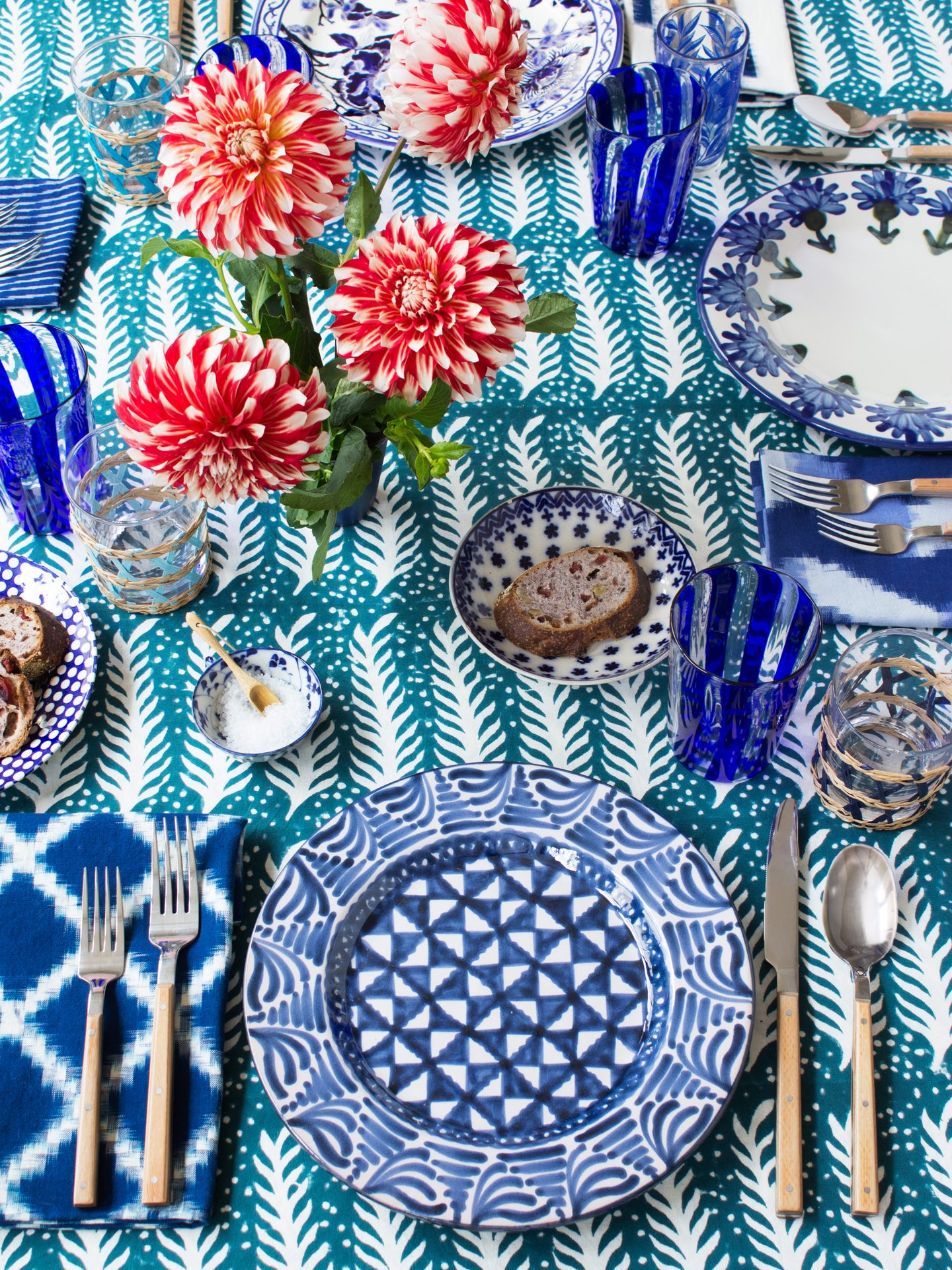Impress Your Dinner Guests in The Most Maximalist Way
You’ll want to copy these awe-inspiring table looks ASAP.
Published Jun 20, 2019 3:11 PM
We may earn revenue from the products available on this page and participate in affiliate programs.
A tired tabletop is one way to send all your guests into a surefire snooze. Sure, everyone’s really there for the food, but if the dining table doesn’t back the evening’s fabulous meal, your fellow dinner companions may quickly grow bored—no matter how good your cooking is. Want to infuse a little life to your dining room? In lieu of a traditional holiday setting, this season, we’re loading up on alternative patterns and unexpected colors that stray far from your standard display.
For all our maximalist entertaining needs, we asked the team at David Stark Design and Production for their most inspired and color-charged ideas for the dinner table. Reinventing six different colorways, the renowned event producer and decorator extraordinaire shares his rules for crafting a layered and cohesive tablescape. Take a look.
Repetition Is the Secret to Cohesion
Not unlike putting together a wardrobe, Stark approaches table design from a layered perspective. His advice? Think of your table linens as the outfit, or defining base for your composition, and the glasses, napkins, and centerpiece as your accessories. “Often, the tablecloth becomes the linchpin of our color story, creating the canvas for a tablescape’s palette,” shares Stark.
Echoing the concentric circles of Pierre Frey’s multi-colored “Mil Neuf Cent Vingt” fabric, here, Stark and his team incorporated plates and glasses that subtly mimic the existing forms. When designing around a powerful range of rainbow-bright hues, repetition will tie the varied palette together.
Play Up Classics With Woven Textures
Putting a contemporary spin on a timeless color pairing, Stark and his team revamped this classic color scheme by introducing graphic movement and woven textures into the picture. From the tablecloth to the napkins, each piece plays with this iconic marriage in a shapely way, while natural details extend a sense of softness to the abrupt contrast.
“Black and white is always timeless and cool but adding hand-made or natural elements to the mix takes the look from ’60s mod to bohemian-chic,” explains Stark. “Whether incorporating a gloss, black ceramic charger that is softened by its exposed, natural edge or glassware with a hand-woven, basket casing, these natural additions ground the geometric patterns on the table and keep the decor from becoming retro.”
Go Big, But Think Small
Be it a lavish peach or rusty apricot, of all the colors we’re craving right now, orange comes in at the top of our list. Love the look of a striking, monochrome set up? When working pattern into an already strong color scheme, be sure to pay attention to proportions.
“Mix patterns of various scales together. A small floral with a larger woven ikat, or a geometric pattern that complements—there are no rules. Color can link and unify the various, disparate elements beautifully.”
Pair Down Your Busiest Prints
Speaking of scale, the same principle applies when introducing high-impact motifs to the scene. If there’s a wild print you really love, don’t be afraid to bring it to the table—just do it in smaller doses. When scaled down to its smallest size, a heavy print will take on the form of a neutral base.
“Although on the surface, a pattern can be deemed quite ‘busy,’ when it’s of a minute scale (as is the case with the Japanese indigo fabric used as the tablecloth here), it reads more as a rich monochrome of color,” suggests Stark. “Thus, it’s not a problem to mix other larger-scale motifs like those of the plates or napkins with it as they all are simpatico.”
Incorporate Contrasting Florals
Table florals aren’t there just to look pretty. In fact, depending on their color, texture, and movement, fresh florals can add a sense of visual intrigue and build on the depth you’ve been working to create.
“A centerpiece often completes a monochromatic statement,” says Stark. “Color and flowers, though, can also be used effectively when contrasting to your table setting—like the hot dahlias juxtaposed to cool tableware here. A vibrant, unexpected punch of color says ‘opposites attract.’”
Embrace Cliches
While certain prints can get a bad rap, don’t write off any “dated” patterns just yet. Take plaid, for instance. When complemented by a range of casual shapes and marbleized waves, the straightforward print takes on fresh meaning.
“Plaid has certain connotations—school uniform, lumberjack, even Scottish Highlands—but it can also feel less rigid when paired with the flowing forms of marble, batik, and other materials that either show the heartbeat of the artists’ hand or the natural imperfections of organic elements,” suggests Stark.
Want more table decor ideas?
We Found the Easiest Way to Elevate Your Tablescape
